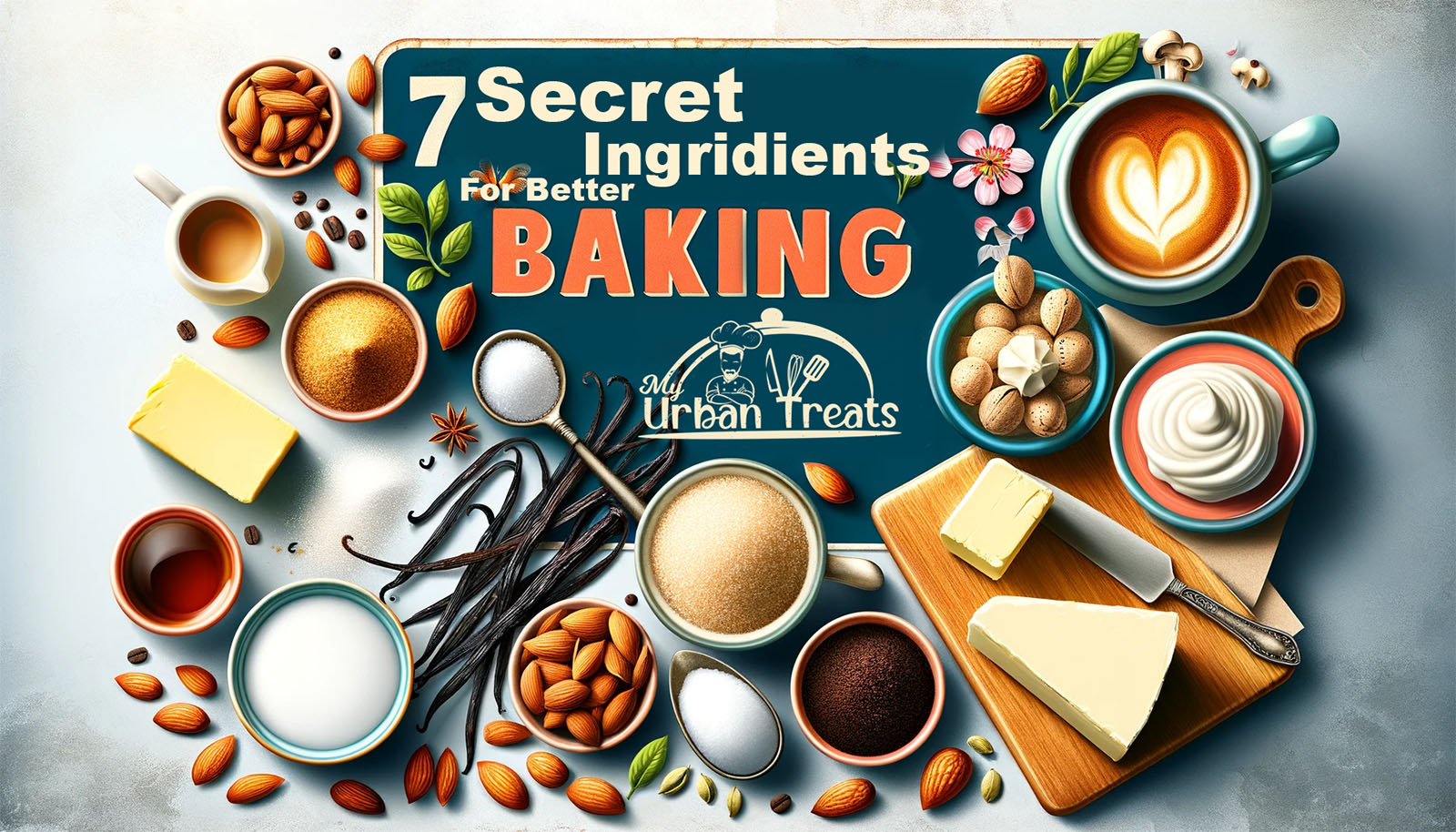I love baking, it relaxes me and when people taste my recipes and I see the pleasure on their faces its worth all the time spent (and cleanup afterwards) Baking for last 20+ years, I’ve learned that the right ingredients can make all the difference in transforming a good recipe into a phenomenal one.
Today, I’m excited to share with you my seven secret ingredients that have elevated my baking game, and I believe they can do the same for you.
Vanilla Bean Paste: The Flavour Enhancer
Why Vanilla Bean Paste?
Vanilla extract is a staple in many kitchens, but if you want to take your baking to the next level, use vanilla beans instead. Unlike the extract, which is a liquid, vanilla bean paste has a thick, syrupy consistency and contains actual vanilla bean specks. This not only adds a richer flavour but also gives your creations a distinct look of quality.
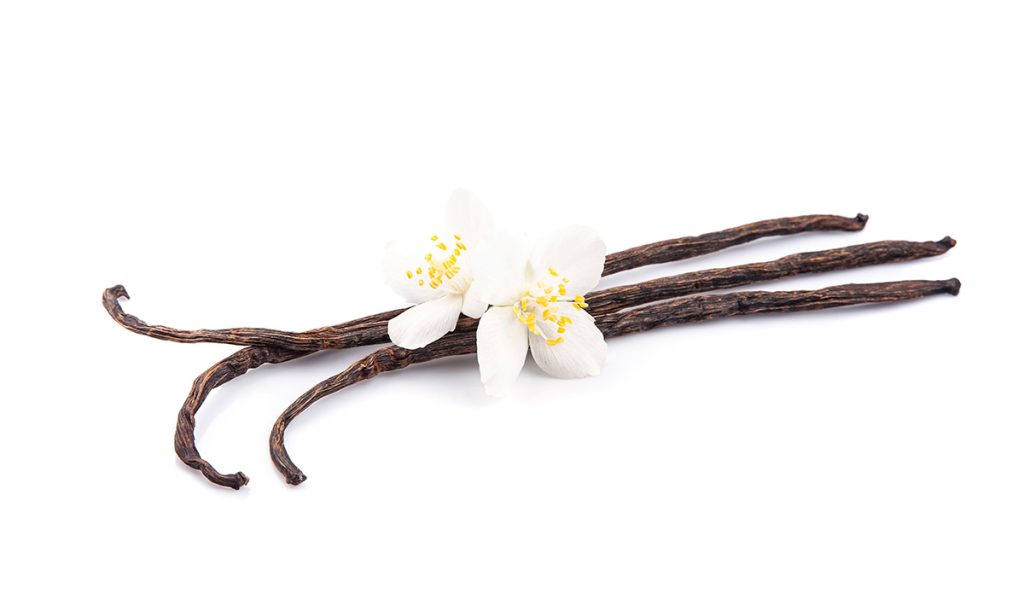
How to Use It
I remember the first time I swapped vanilla extract for vanilla bean paste in my classic fluffy vanilla cake. The difference was astounding. The cake had a more pronounced vanilla flavour and looked beautiful with tiny black specks throughout. You can substitute vanilla bean paste in a 1:1 ratio with vanilla extract in any recipe. Try it in cakes, cookies, and custards for a delightful upgrade.
To get the vanilla paste goodness, use a sharp knife to cut a slit along the vanilla bean and spread it open. Then carefully scrape out the paste, and voila, you have all the rich and complex flavour of real vanilla. I usually buy vanilla beans that are sealed in a glass vial, this keeps them fresh and flavour full for longer.
Almond Flour: The Moisture Retainer
Benefits of Almond Flour
Almond flour is made from finely ground almonds and has a slightly sweet, nutty flavor. It’s a fantastic ingredient to add moisture and improve the texture of your baked goods. Plus, it’s a great option for those looking to reduce their carb intake or avoid gluten. I like combining almond and wheat flour for a rich and moist texture. I discovered this trick by making my banana walnut cake, I added finely chopped walnuts and loved the nutty flavour, I then started experimenting with nuts and nut flour and found that Almond flour is easy to use and adds all the benefits and flavour.
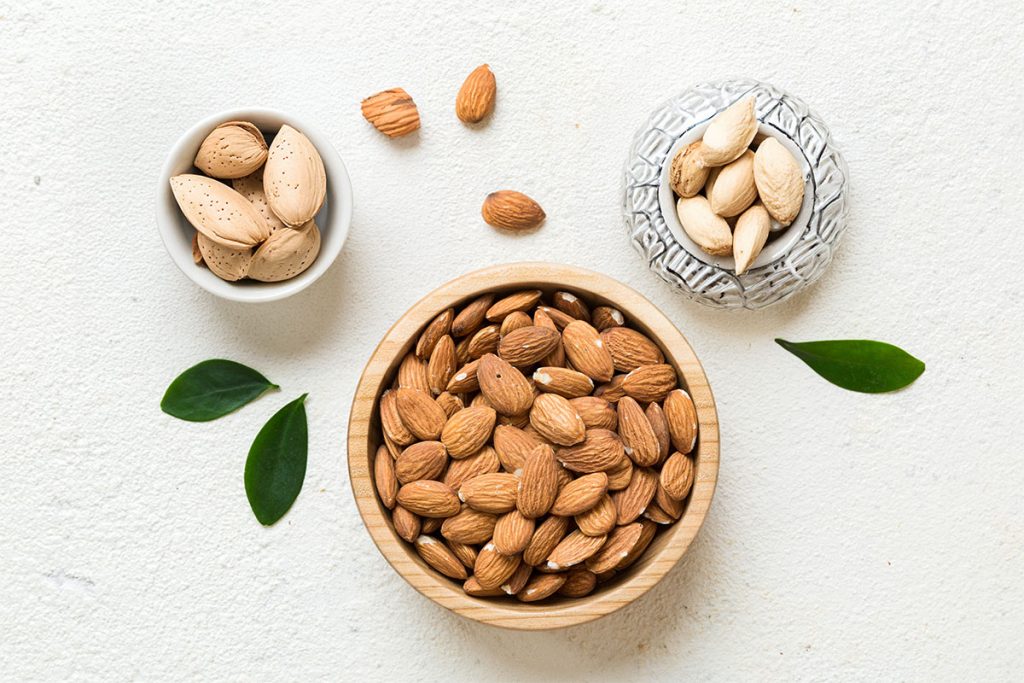
Incorporating Almond Flour
I love using almond flour in my baking, especially in recipes like cupcakes and gluten-free brownies. One of my favourite experiments was adding almond flour to my blueberry muffins. The result was incredibly moist muffins with a delicate crumb. You can start by replacing about 25% of the regular flour in your recipe with almond flour and see how it transforms your baked goods.
Greek Yogurt: The Texture Transformer
Why Greek Yogurt?
I have to admit, when it comes to Greek Yoghurt, I am quite spoilt. Living in Cyprus means I can cheap and high quality yoghurt which isn’t the case for everyone but trust me it’s so worth it. Greek yogurt is a fantastic ingredient for adding creaminess and tanginess to your baked goods. It’s also a healthier alternative to sour cream or butter, providing a protein boost and reducing the fat content.
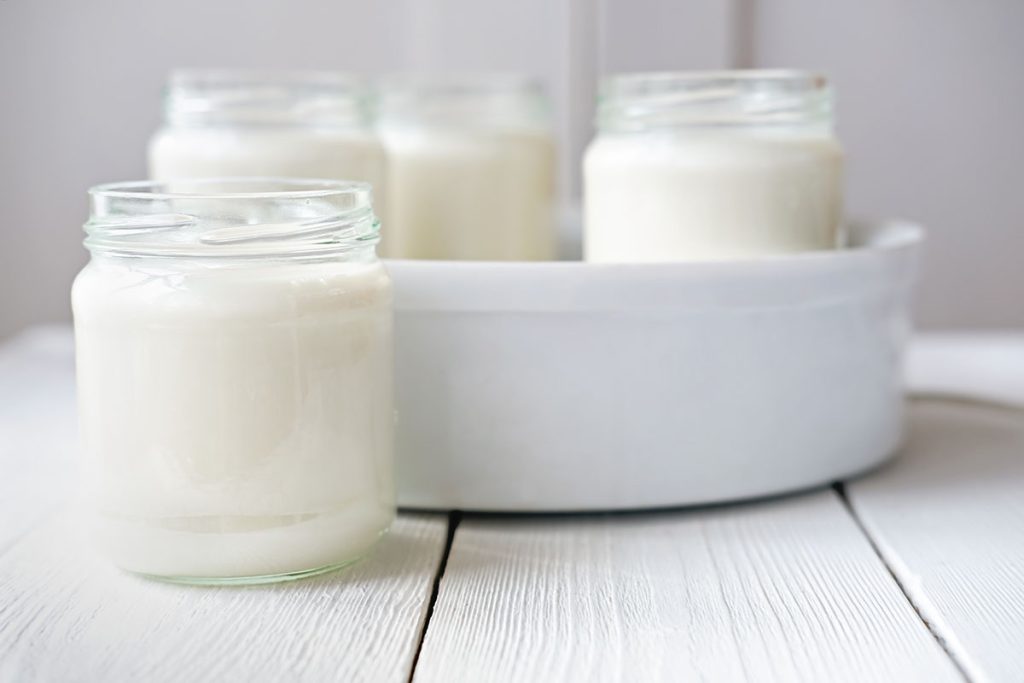
Using Greek Yogurt in Baking
You can use Greek yogurt as a substitute for sour cream, butter milk, and even oil in recipes like cakes, muffins, and pancakes. Just be mindful of its tangy flavor and adjust the sweetness if necessary. I tend to add a couple of table spoons to most of my cakes and pancakes as it improves fluffiness and moisture content.
Espresso Powder (or real Espresso): The Chocolate Intensifier
The Magic of Espresso Powder
Espresso powder is a secret weapon in the baking world. It’s not used to add a coffee flavor but rather to enhance and deepen the flavor of chocolate. Just a teaspoon can make a significant difference in your chocolate-based recipes. You can also use fresh espresso.
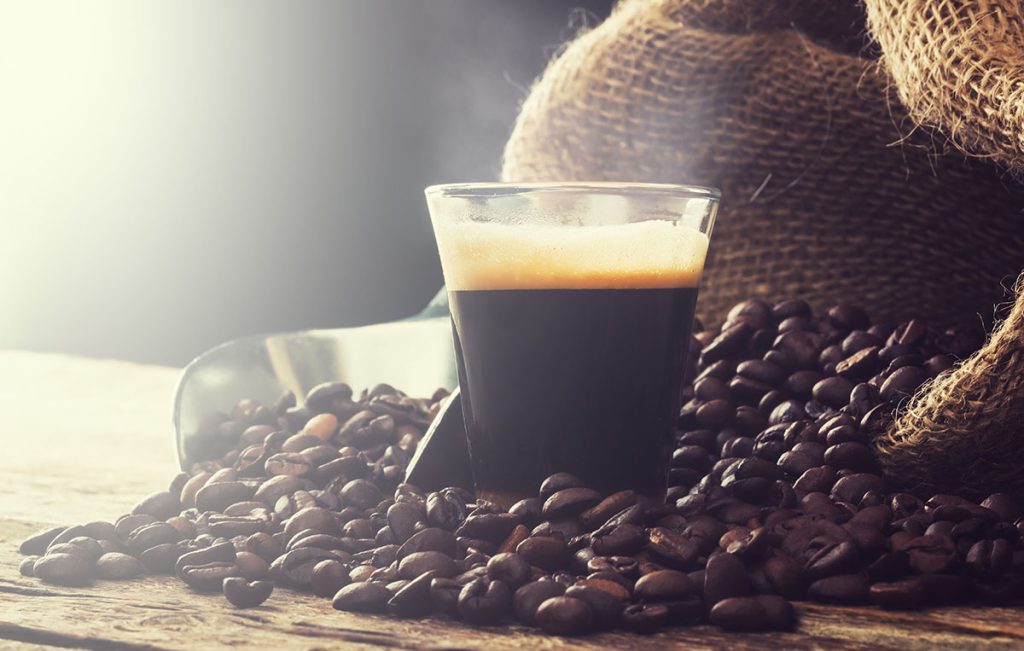
Enhancing Chocolate Flavor
I vividly recall the first time I added espresso powder to my chocolate cake batter. The cake had a richer, more intense chocolate flavor without any hint of coffee. Now, I always add a bit of fresh espresso or espresso powder to my brownies, chocolate cakes, and even chocolate chip cookies. A little goes a long way, so start with a teaspoon and adjust to your preference.
If you use fresh espresso, which I love, make sure you adjust your liquid accordingly to avoid having a runny batter.
Brown Butter: The Flavor Booster
What is Brown Butter?
Brown butter, or beurre noisette, is simply butter that has been cooked until the milk solids turn golden brown, giving it a nutty, caramel-like flavor. This simple process can dramatically enhance the flavor of your baked goods. I never make cookies without browning the butter first.
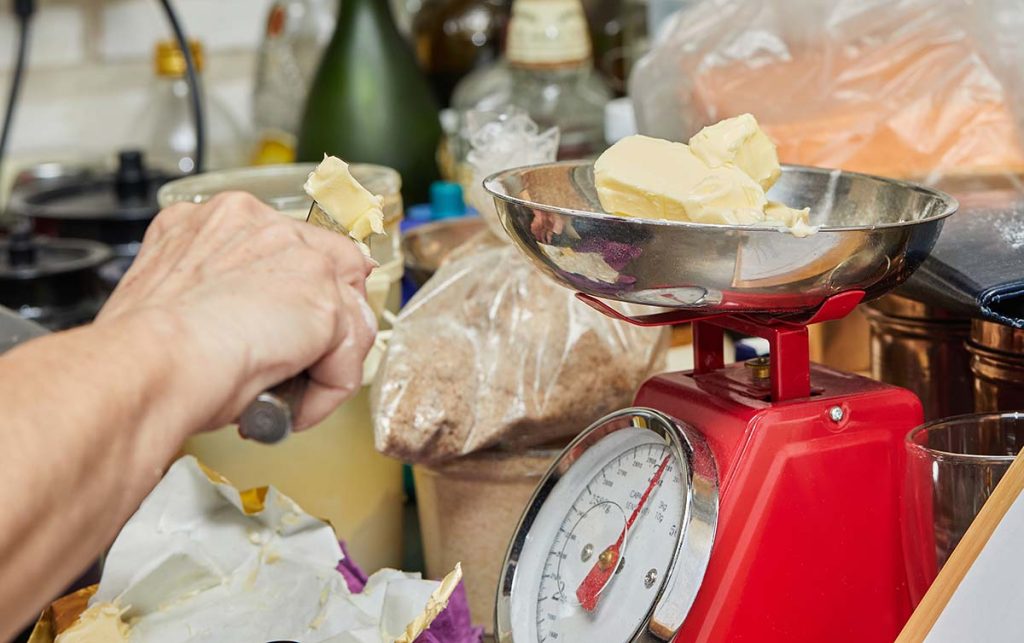
Using Brown Butter
One of my baking epiphanies was when I made brown butter chocolate chip cookies. The nutty, toffee-like flavor of the brown butter took the cookies to a whole new level. To make brown butter, melt butter over medium heat and continue cooking until it turns golden brown and has a nutty aroma. Use it in place of regular butter in cookies, cakes, and pastries for a richer, more complex flavor. Check out my chocolate cookie recipe, it uses browned butter too.
Cardamom: The Exotic Twist
The Allure of Cardamom
Cardamom is a spice with a unique, aromatic flavor that can add a sophisticated twist to your baked goods. It’s often used in Indian and Scandinavian baking and pairs beautifully with other spices like cinnamon and nutmeg.

Adding Cardamom to Your Recipes
I first experimented with cardamom in a batch of snickerdoodles, and it was a game-changer. The subtle, exotic flavor of the cardamom gave the cookies a unique depth. Try adding a teaspoon of ground cardamom to your spice blends, cookie doughs, and cake batters. It works particularly well in spiced cookies, cakes, and breads.
Coconut Sugar: The Sweet Alternative
Why Coconut Sugar?
Coconut sugar is a natural sweetener made from the sap of coconut palm trees. It has a lower glycemic index than regular sugar, making it a healthier option. Additionally, it has a rich, caramel-like flavor that can enhance the taste of your baked goods.
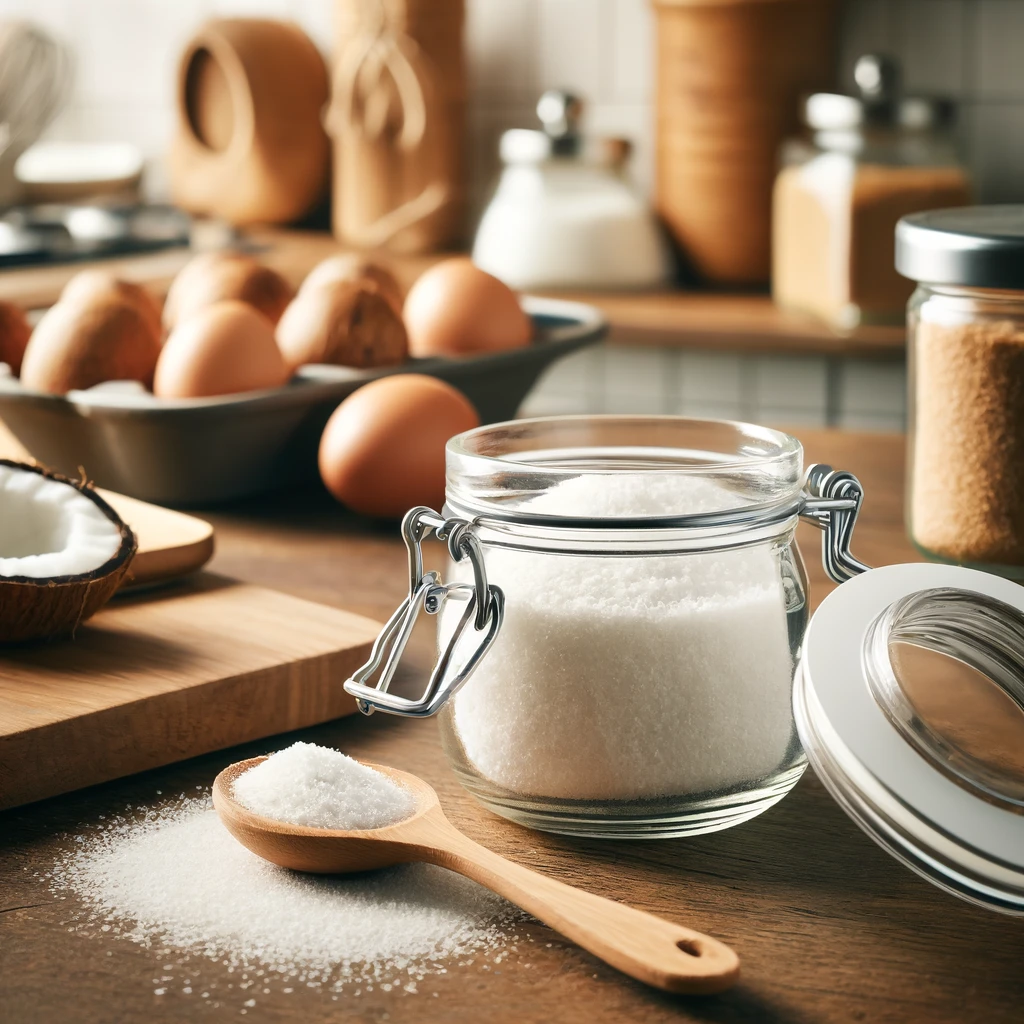
Using Coconut Sugar
I started using coconut sugar when I wanted a healthier alternative for my family’s favorite chocolate chip cookies. The cookies had a delightful, slightly caramel flavor and were just as sweet as with regular sugar. You can substitute coconut sugar for white or brown sugar in a 1:1 ratio. It’s perfect for cookies, cakes, and muffins, adding a unique depth of flavor.
Bonus Tips for Better Baking
Quality Ingredients Matter
In addition to these secret ingredients, always use high-quality basics like fresh eggs, real butter, and unbleached flour. The quality of your ingredients can significantly impact the final product.
Precision is Key
Baking is a science, so measure your ingredients accurately. I recommend using a kitchen scale for the best results. This ensures consistency and helps avoid common baking problems like dense cakes or dry cookies.
Experiment and Have Fun
Don’t be afraid to experiment with these secret ingredients. Some of my best recipes came from unexpected substitutions and creative ideas. Baking should be fun and rewarding, so enjoy the process and share your delicious creations with friends and family.
Conclusion
Baking is a wonderful journey of creativity and discovery. By incorporating these seven secret ingredients – vanilla bean paste, almond flour, Greek yogurt, espresso powder, brown butter, cardamom, and coconut sugar – you can take your baking to new heights. Each of these ingredients brings something unique to the table, enhancing flavors, improving textures, and adding a special touch to your baked goods.
Remember, the key to great baking is not just following a recipe but understanding how different ingredients work together. So, put on your apron, grab your mixing bowls, and start experimenting with these secret ingredients. Happy baking!

